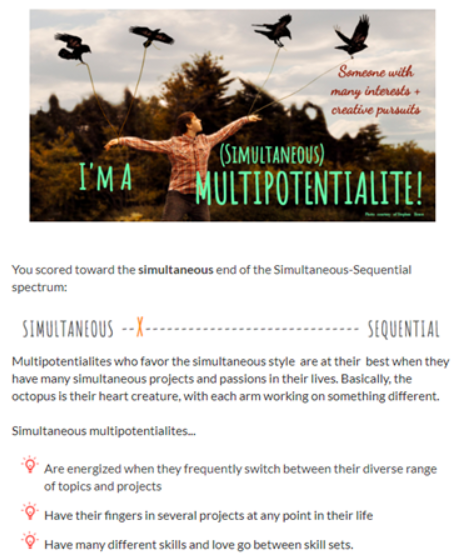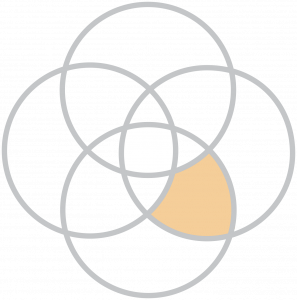In 2017, 10.1% of the US workforce was engaged in some sort of alternative work arrangements, with practices like flexible work schedule, job-sharing, or telecommuting. An even larger percentage of the U.S. working-age population identifies themselves as an independent worker, either as their primary or supplemental income. 60 million workers make up the gig economy, and this number is estimated to rise to the majority of the workforce by 2027. There is no doubt that the gig economy is here and having an enormous impact on the workforce. It would be hard to write about the Future of Work and not consider the role and disruptive nature that the gig economy is having on NASA.
The gig economy is helping change the nature of work. Independent contractors and freelancers have more flexibility and choice in the work that they do, but carry more of the economic risk as well. For organizations that are dependent on a traditional system of full-time, lifelong hiring, the gig economy might feel like a sudden and unpredicted shift to how business has always been done. However, there are plenty of examples of how companies are increasingly shifting non-core jobs, such as design, marketing, and human resources, to gig workers in order to focus on the things they do best, like manufacturing products or selling services (CNBC, 2018). For some, the gig economy has a negative reputation that includes high job insecurity, lack of benefits and decreasing pay. However, the Harvard Business Review found gig economy workers “felt they had mustered more courage and were leading richer lives.” For many, trading in the corporate 9-5 job with a predictable paycheck for more autonomy and flexible work arrangements is worth it.
The gig economy been fueled by a shift in thinking about what it means to have a career. Is it okay for an employee to have a lot of different interests, projects and curiosities that lead to multiple jobs? Or is it better to “climb the career ladder” and become a master of your discipline? An Ottawa-based, career coach named Jean-Philippe Michel, teaches students to think about skills instead of careers. Instead of asking “What do you want to be when you grow up,”perhaps the better question is “How do you want to be when you grow up?” (BBC, 2017) In focusing on skills and values, he encourages his students to build transferable skills for the area of expertise they enjoy. Hence, if this area’s demand declined, or if they became bored with the repetition of it, they could translate their skills into another job with the same desired environment. This relates back to the idea of having tasks and skills dictate the job, instead of the job dictating the tasks and developing the skills. In the current workforce, it is already becoming common to straddle multiple areas within the same company. For example, I am writing this article for the Human Capital Office, I shoot videos for the Office of Education, and I design parts as an engineer. Companies like Cisco and MasterCard are taking this one step further by letting employees proactively pick projects they prefer in order to fill company gaps. Employees are empowered to choose projects based on skills they have and/or want to learn and develop. So far, the benefits of this internal freelancing has proven to be greater retention: it reduces turnover because the employees are able to find meaningful projects within their current company.

Consider the website and online community. Founded by Emilie Wapnick, an award-winning author, artist, and community builder, Puttylike is a community of people who call themselves multipotentialites: people who enjoy and want to pursue a variety of interests that are not usually related to one another. These are people always working on multiple projects, with tabs on tabs on tabs open in their browser and piles of books on their nightstands. The community at Puttylike is made up of people who get bored after short bursts of doing the same thing and who are rapidly shifting and changing their interests, obsessively delving into one spontaneously, and then shifting yet again. The website offers an assessment (pictured above) that scores you on a spectrum from simultaneous to sequential and offers advice for multipotentialities based on the results. This type of thinking is a shift from the current workforce landscape that heavily caters to specialists. Although some employees do fall in with just one particular subject that they hope to work on for an extended period of time, this doesn’t present many opportunities for multipotentialites.
NASA has traditionally offered plenty of opportunities for the specialist. In fact, building, launching, maintaining and unpacking the discoveries of space missions is often a 10 or 20 year effort requiring the focus only a team of specialists can bring. Without the role of a specialist, it would be nearly impossible to land a rover on Mars or sustain the International Space Station for decades. Some positions, such as a Flight Director, require at least a decade of on-the-job experience. Yet, there is an equally large amount of research that points to the valuable role generalists, and multipotentialites, serve in the workforce. Generalists disrupt siloed thinking, challenge the status quo, and encourage interdisciplinary interactions. A healthy workplace makes room for both specialists and generalists by focusing on the effective matching of the talent and passion of individuals with the work that needs to be done. Specialists can focus and generalists can disrupt.
Agencies like NASA are beginning to explore how they can offer alternative work arrangements and encourage workforce mobility in order to attract and utilize their employees more effectively. In the future, NASA’s workforce will likely include part-time and full-time workers, generalists and specialists, multipotentialities and sequentialists. A larger percentage of talent will come from outside the current workforce, enabling more highly knowledgeable and passionate people to contribute to NASA’s mission. Inside NASA, employees will have more of an ability to pursue projects that align with their talents, passions, interests and development objectives. In this way, NASA will create a multidimensional and agile workforce, where job transitions are easier, job descriptions are more flexible, and talent is more effectively channeled.
About the Authors
Nick Skytland | Nick has pioneered new ways of doing business in both government and industry for nearly two decades. He leads the Future of Work initiative at NASA and is the Agency Talent and Technology Strategist in the Talent Strategy and Engagement Division within the Office of the Chief Human Capital Officer (OCHCO).
Sarosh Nandwani | Sarosh is a NASA intern with experience working in the EVA, Crew Systems, and Robotics division at the NBL and is focused on expanding their VR capabilities. Sarosh attends UT Austin and will graduate in December 2019 with degrees in Mechanical Engineering and Anthropology. Sarosh is passionate about poetry and art and works part-time in UT Austin’s Defabrication and Electronics Lab, the MakerStudio, during the school year. She says hello to every dog she sees.

